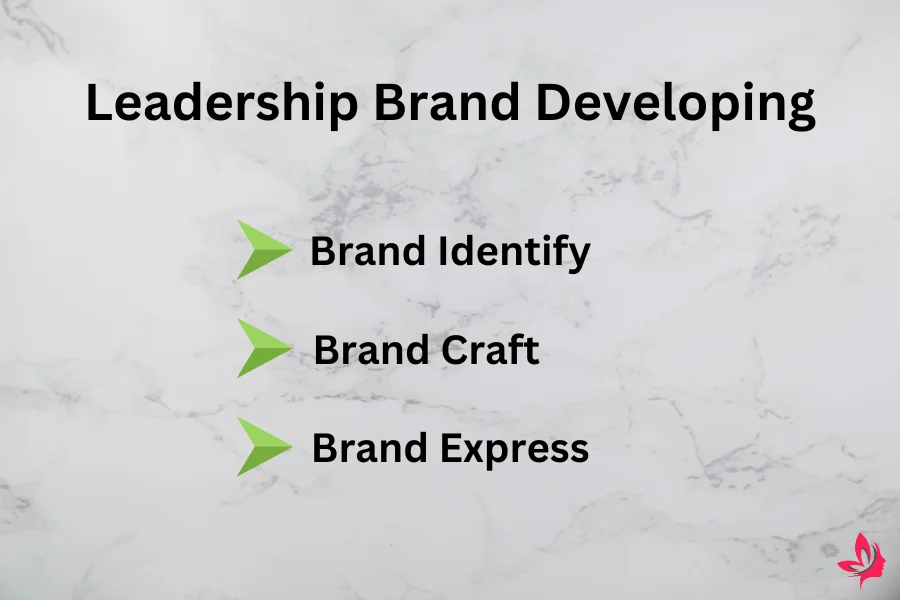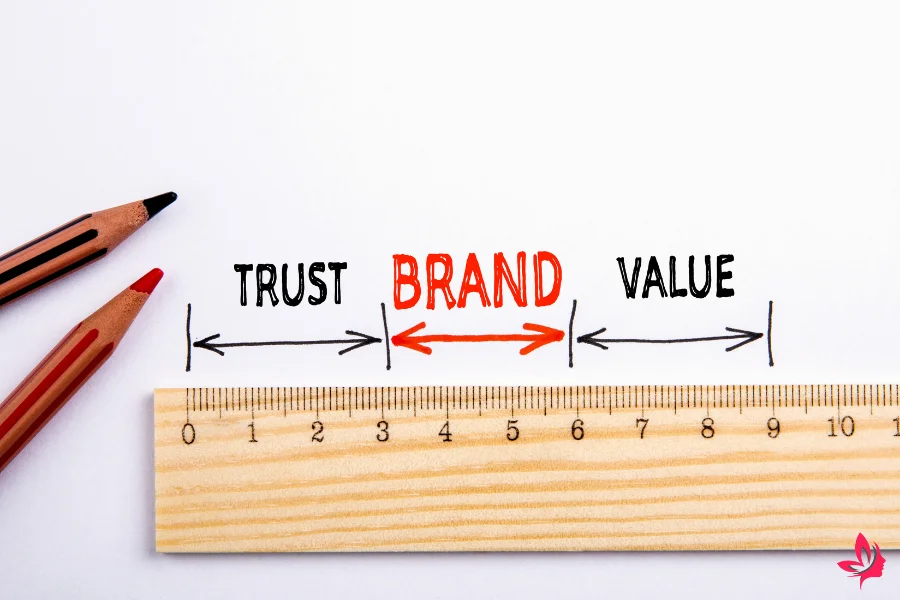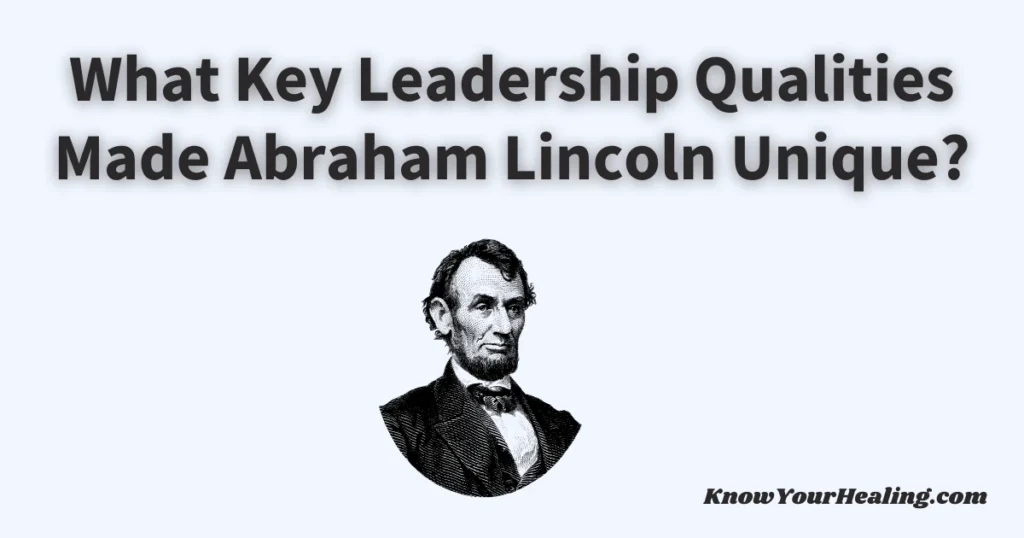Creating a strong leadership brand is essential for anyone looking to impact their career significantly. Many leaders struggle with defining their unique identity and effectively communicating it.
By crafting a clear, compelling leadership brand, leaders can enhance their professional presence and open doors to new opportunities.
The process involves understanding one’s core values and how these translate into everyday leadership behaviors.
Strong examples of leadership brands include clear statements of what sets a leader apart and the unique strengths they bring to their role.
Leaders should consider building their brand by reflecting on what qualities they want to be known for and how they can align with their organization’s goals.
Incorporating personal values into leadership practices enhances trust and credibility and drives organizational success.
Teams are more likely to rally behind leaders whose actions consistently reflect their stated values, elevating the group’s overall effectiveness and morale.
Understanding the Importance of a Strong Leadership Brand

A strong leadership brand differentiates leaders in their fields, boosts their reputation, and aligns their values with business goals. It is essential for leaders seeking to make a significant impact.
What is a Personal Leadership Brand?
A personal leadership brand reflects how individuals are perceived as leaders. It combines unique qualities, core values, and leadership skills to form a distinct identity.
A clear leadership brand helps leaders communicate their mission statement and build trust with direct reports and potential clients.
For example, Norm Smallwood emphasizes defining leadership competencies to create value, making leaders like household names in their industries.
Leaders can tailor their message and enhance their online presence by understanding their target audience.
Key Values that Define Leadership Style
Leadership style is defined by key values that guide actions and decision-making.
Core values like integrity, innovation, and customer service are critical in forming a strong leadership brand.
Business leaders such as Elon Musk exemplify visionary leaders whose assertive styles shape their companies’ strategic vision and company goals.
By aligning leadership approaches with these core values, leaders foster an environment of trust and inspire teams toward achieving shared objectives.
Examples of personal branding statements that include values enrich a leader’s brand identity and help maintain consistency in leadership content across social media platforms.
The Role of a Leadership Brand Statement in Business
A leadership brand statement articulates a leader’s unique value proposition, helping to convey their distinctive qualities and mission to potential investors and clients.
This decisive tool links leader actions with value creation, ensuring alignment with the company’s promises and strategic plans.
Personal brand statement examples show that defining such statements is the first step toward becoming a top voice in their industry.
Business leaders like Gary Vaynerchuk utilize leadership brand statements to engage the general public and broaden their market share, thus reinforcing their influence in an ever-competitive marketplace.
Steps to Develop Your Leadership Brand

Creating a strong leadership brand involves understanding your unique qualities and effectively communicating them.
This consists of identifying, crafting, and expressing your brand in a way that resonates with your target audience and reflects your core values.
The First Step in Building a Strong Leadership Brand
The first step in building a strong leadership brand is self-assessment.
Individuals need to understand their core values and distinctive qualities that differentiate them from others.
This involves conducting personality assessments and seeking feedback from direct reports and colleagues.
Feedback helps identify strengths and areas where leadership skills can be improved.
Establishing a clear leadership brand that aligns with one’s personal values and goals is crucial for impactful leadership development.
Thought leaders like Oprah Winfrey and Elon Musk have crafted strong leadership brands by consistently embodying their principles and communicating a clear vision.
Identifying Your Unique Value Proposition
Developing a leadership brand that resonates requires identifying a unique value proposition.
This involves recognizing skills and leadership styles that add value to the team or organization.
Identify what makes you a valuable asset: a strategic vision, customer service excellence, or the ability to inspire others as a senior leader.
A compelling value proposition helps build trust with potential clients and colleagues.
Gary Vaynerchuk, for example, positions himself as a visionary leader in digital marketing, showcasing his ability to create a significant impact in the industry.
Leadership branding must reflect these unique qualities to establish a distinct identity in the professional sphere.
Crafting a Compelling Personal Brand Statement
A compelling personal brand statement is key to effectively conveying your leadership brand.
This statement should reflect key values and leadership approaches concisely.
Personal branding examples, such as those by business leaders Norm Smallwood and Sara Blakely, illustrate the power of strong brand narratives.
The statement should articulate personal leadership goals and how they align with company goals or the ideal client’s needs.
Use social media platforms to strategically share leadership content, enhance online presence, and engage with the target audience.
By consistently presenting a leadership brand that aligns with your mission statement and market value, you position yourself for higher-level positions and opportunities to influence significant change.
Analyzing Successful Leadership Brand Examples

Exploring successful leadership brand examples reveals how well-known figures develop strong personal leadership brands through clear leadership brand statements and consistent effort.
These examples highlight the importance of connecting with a target audience and how leaders use their identity to make a significant impact.
Lessons from Visionary Leaders like Elon Musk and Oprah Winfrey
Visionary leaders like Elon Musk and Oprah Winfrey exemplify strong leadership brands through their innovative approaches and distinct core values.
Musk’s leadership style reflects his strategic vision and commitment to technological advancement, earning him a reputation as a thought leader in space travel and electric vehicles.
Both Musk and Winfrey maintain powerful social media presences, which help them connect with their vast audience and share their inspirational messages.
A focus on personal growth and social responsibility marks Winfrey’s career. Her ability to engage with her audience through media platforms makes her a household name.
They inspire others to identify their unique qualities and build a leadership brand that resonates deeply with their potential clients.
Examples of Strong Personal Brands: Gary Vaynerchuk and Malala Yousafzai
Gary Vaynerchuk and Malala Yousafzai demonstrate how personal brand statement examples can effectively establish a strong brand identity.
Vaynerchuk, a serial entrepreneur, uses social media platforms to showcase his unique value proposition, emphasizing entrepreneurship and hard work.
His engaging style and dynamic content creation make him a compelling personal brand statement in digital marketing.
Malala Yousafzai, an advocate for education and women’s rights embodies a leadership brand focused on social impact.
Her commitment to her mission statement and transparent communication with her audience create a strong leadership brand that inspires change.
Both individuals highlight how clear leadership brand statements help define and communicate core values.
How Norm Smallwood and Other Business Leaders Build Trust
Norm Smallwood is a significant figure in leadership development, focusing on building trust through leadership content and personal branding examples.
Smallwood and other business leaders align their leadership style with company goals and market value to create a clear leadership brand that resonates with their direct reports and potential investors.
Business leaders like Smallwood ensure that their company’s promises and personal brand identity are consistent across all social media profiles and employee advocacy platforms, building a strong brand that attracts potential buyers.
Their focus on key values and strategic vision helps maintain market share and solidify their leadership brand in the minds of their audience.
Leveraging Social Media for Leadership Branding

Leveraging social media can significantly impact a leader’s brand identity and visibility. This approach helps spotlight unique value propositions and core values, allowing leaders to connect with potential clients and establish a strong leadership brand.
Best Social Media Platforms for Building Your Brand
Selecting the right social media platforms is crucial for building your brand.
| Platform | Focus | Benefits |
|---|---|---|
| Business leadership and personal branding | Ideal for networking and engaging with industry peers; great for thought leaders. | |
| Visual storytelling | Showcases leadership style through images and short videos; highlights personality traits creatively. | |
| Real-time interaction and idea sharing | Suitable for conversations and updates; helps share insights relevant to market share and industry. |
Content Creation Strategies for Leadership Content
Content creation plays a pivotal role in leadership branding.
Leaders should produce a mix of articles, videos, and posts that reflect their leadership approach and core values.
Sharing powerful tools and practical advice through blog posts or articles can build trust and showcase a clear leadership brand.
Videos where leaders discuss their mission statement or leadership development strategies can engage broader audiences.
Consistency in posting reinforces brand identity and keeps leadership content fresh and relevant.
In all content formats, leaders must stay authentic to their leadership style to maintain a strong and recognizable brand.
Engaging Your Target Audience Through Online Presence
Engaging the target audience effectively amplifies a leader’s online presence.
Responding to comments and messages promptly helps build trust and displays excellent customer service.
Leaders should nurture direct relationships with their audience through interactive content like polls or Q&A sessions.
This involvement encourages a deeper connection with potential clients or investors and showcases the leader’s commitment to open communication.
Leveraging personal leadership brand statements and showcasing key values can resonate well with the ideal client.
These engagements also provide insights into audience preferences, helping refine a leader’s branding strategy.
Measuring the Impact of Your Leadership Brand

A strong leadership brand can significantly impact your career and business. Tracking its effectiveness involves a few key areas, such as evaluating brand value, incorporating feedback, and building a distinct identity that appeals to potential clients.
Understanding brand value and market share is crucial in measuring leadership brand impact.
Market share can clearly indicate a brand’s position against competitors.
Companies must conduct surveys and use metrics such as customer retention rates to evaluate their market position.
One practical way to achieve this is by examining customer feedback and purchasing patterns, which offer insight into how the brand is perceived in the broader market.
Leadership brand examples with high brand value, such as Gary Vaynerchuk and Elon Musk, often maintain an active online presence to engage with their audience.
These engagement metrics, including social media followers and interaction levels, provide valuable data on brand impact.
This is key for developing strategic plans to enhance brand reputation and market influence.
The Next Step in Leadership Development: Feedback and Growth
Gathering feedback is vital for leadership development. Using evaluations and direct reports from peers and employees helps identify areas for improvement.
Leaders should focus on personal growth to foster a strong leadership brand. They can seek feedback through regular meetings or employee advocacy platforms.
Integrating feedback into leadership styles helps refine skills and enhances team collaboration. For instance, Norm Smallwood suggests linking actions with value creation for sustained improvement.
By applying feedback, leaders can solidify their brand and align more effectively with their company’s goals. This demonstrates their commitment to continuous personal and professional development.
Building a Distinct Identity that Resonates with Potential Clients
Creating a distinct brand identity requires clarity and consistency. Leaders can craft compelling personal brand statements by expressing their unique qualities and core values.
Examples of strong personal brand statements show the importance of aligning these elements with a leadership approach that resonates with a target audience.
Tools like personality assessments help identify traits that can enhance brand identity. Engaging through social media platforms and leveraging online content creation builds a leadership brand that attracts potential clients.
This clear brand leadership positions leaders as visionaries and ensures their message consistently aligns with client expectations and needs.
Final Thoughts
Leadership brand examples highlight the importance of creating a unique identity as a leader. Building this identity helps influence how others perceive leadership qualities and effectiveness.
Effective leadership branding involves identifying personal strengths and communicating them. This creates a strong, authentic representation and enhances professional relationships.
Leaders should continuously refine their branding to align with personal and professional growth.
Here’s a closer look at some key strategies involved in crafting a leadership brand:
- Self-awareness: Understand personal strengths and values.
- Consistency: Maintain a clear and consistent message across all platforms.
- Authenticity: Stay true to personal beliefs and values.
Fostering a positive perception through a leadership brand also involves setting achievable goals.
For more detailed guidance on crafting a powerful leadership brand, consider examples and strategies that reflect specific strengths and goals.
Key Takeaways:
- Focus on authenticity and clarity.
- Use consistent messaging and self-awareness.
- Reflect on personal and professional growth.
This approach helps leaders connect effectively with team members and other professionals, making their brand memorable and impactful.
Frequently Asked Questions
Creating a strong leadership brand involves understanding key leadership qualities and how they influence professional success. This section discusses common questions about leadership brands, offering insights into practical strategies and examples.
What is a good leadership brand?
A good leadership brand reflects a leader’s values and consistent action toward goals. It emphasizes integrity, accountability, and vision. Effective leaders use their brand to inspire trust and motivate others.
What is an example of a leadership brand statement?
An example of a leadership brand statement might be, “As a leader, I empower teams to innovate and achieve results through collaboration and strategic thinking.” This shows commitment to team success and value-driven leadership.
How do I write my leadership brand?
To write a leadership brand, consider personal strengths, values, and professional goals. Reflect on how these elements guide interactions and decisions. A concise statement summarizing these aspects can effectively convey one’s leadership brand.
What are the 7 leadership styles with examples?
The seven leadership styles include autocratic, democratic, transformational, transactional, coaching, laissez-faire, and servant leadership.
For instance, transformational leaders often inspire change and innovation through vision and charisma.
How do you answer what is your leadership brand?
To answer this, clearly articulate your leadership style and core strengths and how these impact your work environment. Highlight past achievements that demonstrate your brand. Tailor the response to align with the organization’s values.
What is an example of good leadership?
Good leadership is exemplified by a leader who empowers their team, communicates effectively, and adapts to challenges.
For example, a leader who fosters an inclusive environment encourages diverse perspectives and supports growth.
Why does leadership brand matter?
A leadership brand is crucial as it shapes professional reputation and influences career opportunities. It helps leaders stand out and establish trust. A strong brand enhances team dynamics and organizational success.
Which company has the best leadership?
Companies known for strong leadership examples often have clear values, employee-first cultures, and innovative approaches.
Organizations like Google and Apple are frequently cited for exemplary leadership practices.
What is the most popular leadership style?
The most popular leadership style often varies, but transformational leadership is frequently recognized for its positive impact. It emphasizes visionary thinking and motivating teams through inspiring change.
What does the term personal leadership brand mean?
A personal leadership brand defines how others perceive a leader regarding values, skills, and impact. It encompasses the unique qualities and approaches that distinguish an individual as a leader in their field.




